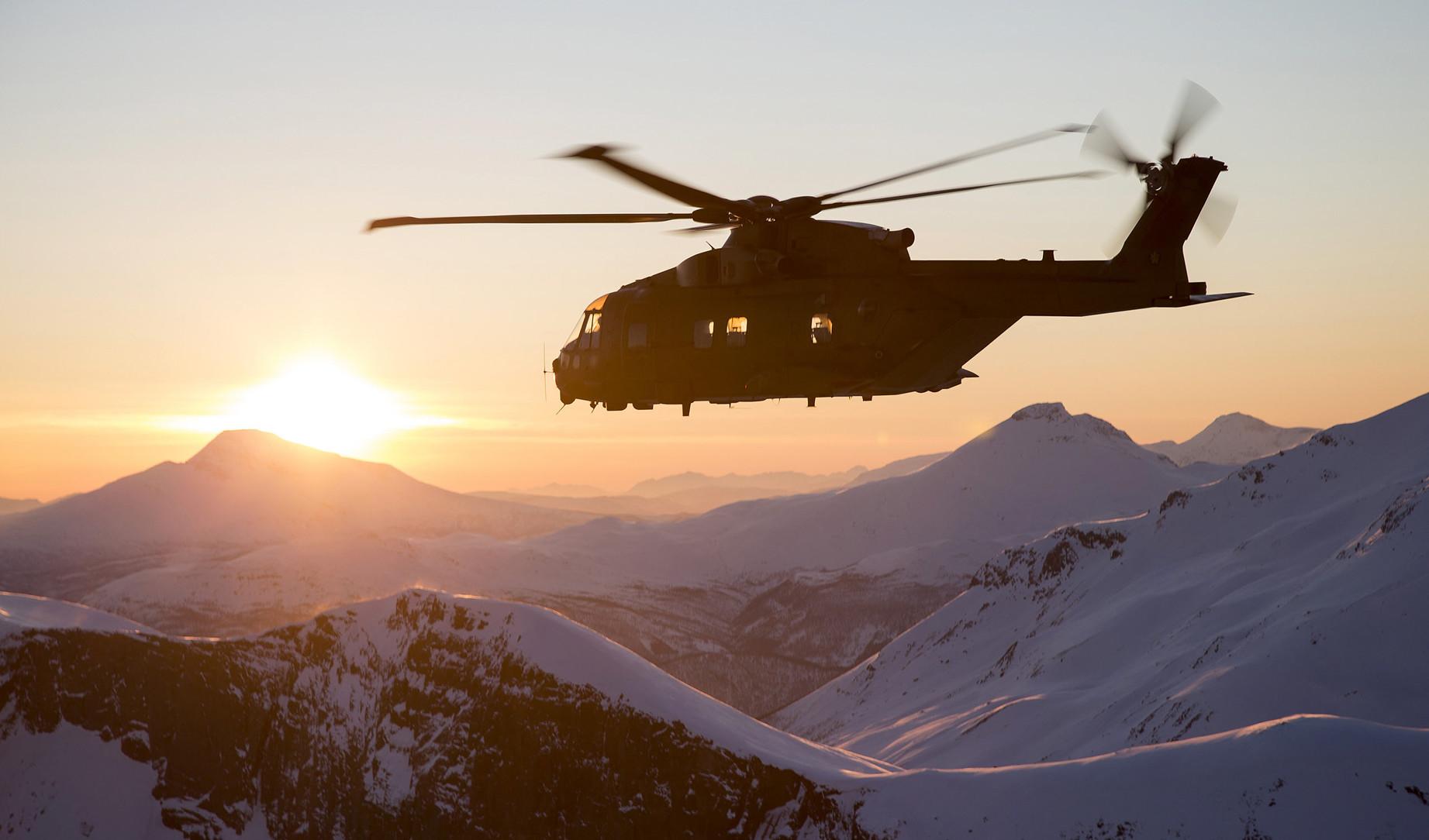
LONDON—Leonardo official says the company hopes to find additional orders for its AW101 three-engine heavy helicopter as a potential replacement for Russian-built platforms.
Since Moscow’s invasion of Ukraine, international sanctions are affecting Russia’s ability to support customers flying types such as the troop-moving Mil Mi-8, Mi-17 and Mi-14 maritime rotorcraft, says Stefano Villanti, Leonardo Helicopters’ senior vice president for sales. So operators of the Russian-made rotorcraft may be forced to look again at their fleet inventories as spares availability drops. He suggests the sanctions could force militaries flying the Russian aircraft to cannibalize aircraft to keep others airworthy.
Villanti spoke to journalists here in London during pre-Farnborough Airshow briefings on July 12.
Leonardo is seeking new buyers for the 15.6-metric-ton rotorcraft. The current backlog for the aircraft, which is built in Yeovil, England, includes a handful destined for search-and-rescue missions in Norway and anti-submarine warfare in Poland. Large numbers of Mi-8s and Mi-17s are in service around the world, and although many in Eastern Europe are now being replaced by Western-built types such as Sikorsky’s Black Hawk—notably as they are transferred to Ukraine by Eastern European air forces—Leonardo is looking at markets beyond Europe for the platform.
The push for AW101 sales emerges as the company marks success in the sale of 32 AW149s to Poland in an 8.25 billion Polish zloty ($1.82 billion) contract signed on July 1. It is the first publicly acknowledged order for the 8.6-metric-ton helicopter, as orders from Egypt and Thailand have never been announced. Aircraft assembly will take place in Poland, but the company is unable to disclose the level of work to be done there, nor the engine choice for the platform. General Electric’s CT7-2E1 and Safran’s Aneto 1K engine are both available for use on the AW149.
Contrary to earlier reports, the AW149s have not been ordered under Warsaw’s long-standing Perkoz requirement, but rather with an urgent operational requirement so that Poland can partially replace some of its Russian-built rotorcraft. Villanti says this procurement will meet part of the requirements of a previously canceled program for which Poland had selected Airbus’ H225M platform in 2015.
Meanwhile, work on a new facility at Ain Arnat, Algeria, is close to completion. Leonardo hopes it will become the OEM’s hub for North African assembly of helicopters. The facility, to be operated by Leonardo Helicopters Algerie SpA, is expected to support assembly of new orders to be placed by Algeria in the coming years. Algeria has become a significant operator of Leonardo-built rotorcraft over the last 15 years, with around 100 aircraft in use. Additional orders are expected to follow in line with the agreement to build the plant, company officials say. This includes AW139 twin-engine medium rotorcraft that will be assembled in-country. At least two other rotorcraft platforms will also be assembled at Ain Arnat, types already in service with the Algerian government.
Company officials also have confirmed that the first AH-249 prototype is in an advanced state of final assembly and “on schedule” to make a first flight after the summer. It is the company’s new attack helicopter under development for the Italian Army to replace its AW129 Mangustas. Few details about the platform’s development have been released, in part due to the Italian defense ministry’s veil of secrecy. But the 8-metric-ton aircraft leans heavily on the dynamic systems of the AW149 utility platform and will use a pair of General Electric (GE) CT7 turboshafts. Service entry is expected in 2027.
At Farnborough, set for July 18-22, the company is planning to present both the AW159 Wildcat maritime helicopter and the AW149, which it is pushing to meet the UK’s New Medium Helicopter requirement.
